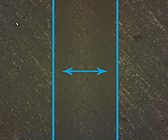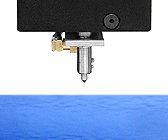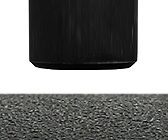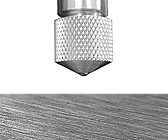Blog Archives

High Temperature Scratch Hardness Using Tribometer
Materials are selected based on the service requirements. For applications involving significant temperature changes and thermal gradients, it is critical to investigate the mechanical properties of materials at high temperatures to be fully aware of the mechanical limits. Materials, especially polymers, usually soften at high temperatures. A lot of mechanical failures are caused by creep deformation and thermal fatigue taking place only at elevated temperatures. Therefore, a reliable technique for measuring high temperature scratch hardness is in need to ensure proper selection of the materials for high temperature applications.
High Temperature Scratch Hardness Using Tribometer
Here are examples of materials we tested this month:

Mechanical:
• Nanoindentation of multiphase metal
• Nanoindentation compression on biofilms
• Nano scratch testing of thin teflon films
• Macro scratch testing of tool coatings

3D Non-Contact Profilometry:
• Roughness of intraocular lenses
• Roughness of valve components
• Roughness of wiper blades
• Volume loss of worn dental
• Step height consistency of micro part channels
• Wear resistance of carbon coating in lubrication

Copper Wire Coating Failure Using Tribology
The surface quality of copper wire is critical in its service performance and lifetime. The micro defects in the wire surface may lead to excessive wear, crack initiation and propagation, and inadequate solderability. Proper surface treatment can remove surface defects that are generated during wire drawing, and improve the corrosion, wear and scratch resistance of the copper wire. Many applications such as aerospace and commercial airliner require copper wires to behave in a controlled manner to prevent unexpected equipment failure. Quantifiable and reliable measurements are in need in order to quantitatively evaluate the wear and scratch resistance of the copper wire surface.










